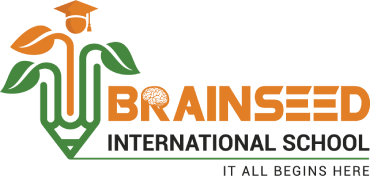History of Abacus
Abacus is a 100-year old tool that is used in mathematical calculations. It was widely used by Asian and African merchants and traders. It is largely found in China and Japan but many other places like India, Persia, Mesopotamia, Greece and Rome also used it.
Structure of an Abacus
An abacus has two regions, the upper and the lower. A bar separates these sections. An abacus helps enhance mental calculations and faster multiplication, division, addition and subtraction.
There are some benefits of using an abacus that are not widely known. As it helps in a child’s overall development, enrolling them in abacus classes from the beginning will be a great idea.
Listed below are some of the benefits of abacus.
Improves Concentration
Children learn to ignore the distractions around them while they are learning how to use abacus and carry out simple mathematical operations. They move on to a simple visualisation technique, which helps them picturise the abacus in their mind and carry out calculations in their mind once they become experts in using it. This will boost their concentration. These skills come in handy in different situations in life and children will find it easy to focus.
Improves Observation and Listening Skills
A child who has been learning abacus for math can start processing numbers at just one glance as a result of flashcard training. It is one of the many mental training techniques used. As the training continues, children hone their observational skills. Their listening skills also improve as they are trained to hear the numbers only once while solving the problems and it also teaches them to actively listen to the questions.
Enhances Visualisation and Imagination
Kids are encouraged to use a virtual abacus from the very beginning, which helps them solve problems instantly by just imagining an abacus. The imagination and visualisation skills of the kids improve as they start using this technique.
Strengthen Memory
A child has to memorise several images during their number training and while solving problems. Students, while learning abacus tend to remember the final image constructed while solving the problem before they give the last answer. With practice, a child’s ability to memorise things that they see will improve and can even eventually lead to photographic memory.
Amplify Speed and Accuracy
Children are expected to get excellent results in any competitive exam that they appear for. Learning abacus can help them learn how to optimise their time as well as be accurate.
Boosts Creativity
The visualisation and imagination skills that are developed in children as a result of learning abacus will, in turn, inspire them to be more creative.
Increases Self-Confidence
Children who learn abacus regularly receive positive feedback from their teachers, parents and peers. When they take part in demonstrations or national and international competitions, they are exposed to many programmes that have different audiences. This gives kids a powerful boost and improves their self-image and confidence This in turn helps prepare them for future challenges.
Strong Academic Foundation
The qualities that are built in a child as a result of learning abacus eventually becomes a part of their psyche, which forms a strong foundation for their academic performance.
Reduces Stress
Abacus stimulates brain activities, which leads to a break in anxiety levels. The stress levels will become almost non-existent when the child starts to enjoy using abacus.
Enhances Gross Motor Skills
It is necessary for children to use their hands and fingers to move the beads of abacus. Moving the beads helps develop the child’s gross motor skills. It is even more beneficial for children when they learn this at a very young age, than when they get older. Thus, abacus not only improves the brain function of children but also helps in stimulating their sensory organs, which ultimately result in their overall development.
Analytical Skills
The analytical skills of children improve when they are solving a mathematical problem with an abacus’ help. For instance, when a child learns to solve the same problem with several simple formulas, they will automatically learn to figure out which is the right formula to use. This in turn will build their analytical skills.These skills will become useful in different real-life situations as well.
When your child reaches the age of 4, you can enrol him/her in abacus classes. Your child’s brain processes information the right way and they also have a better understanding of how to use the beads or to get their solution right at this age. No matter what the age, it is never too late for a child to learn a new skill and this one is definitely worth learning.
